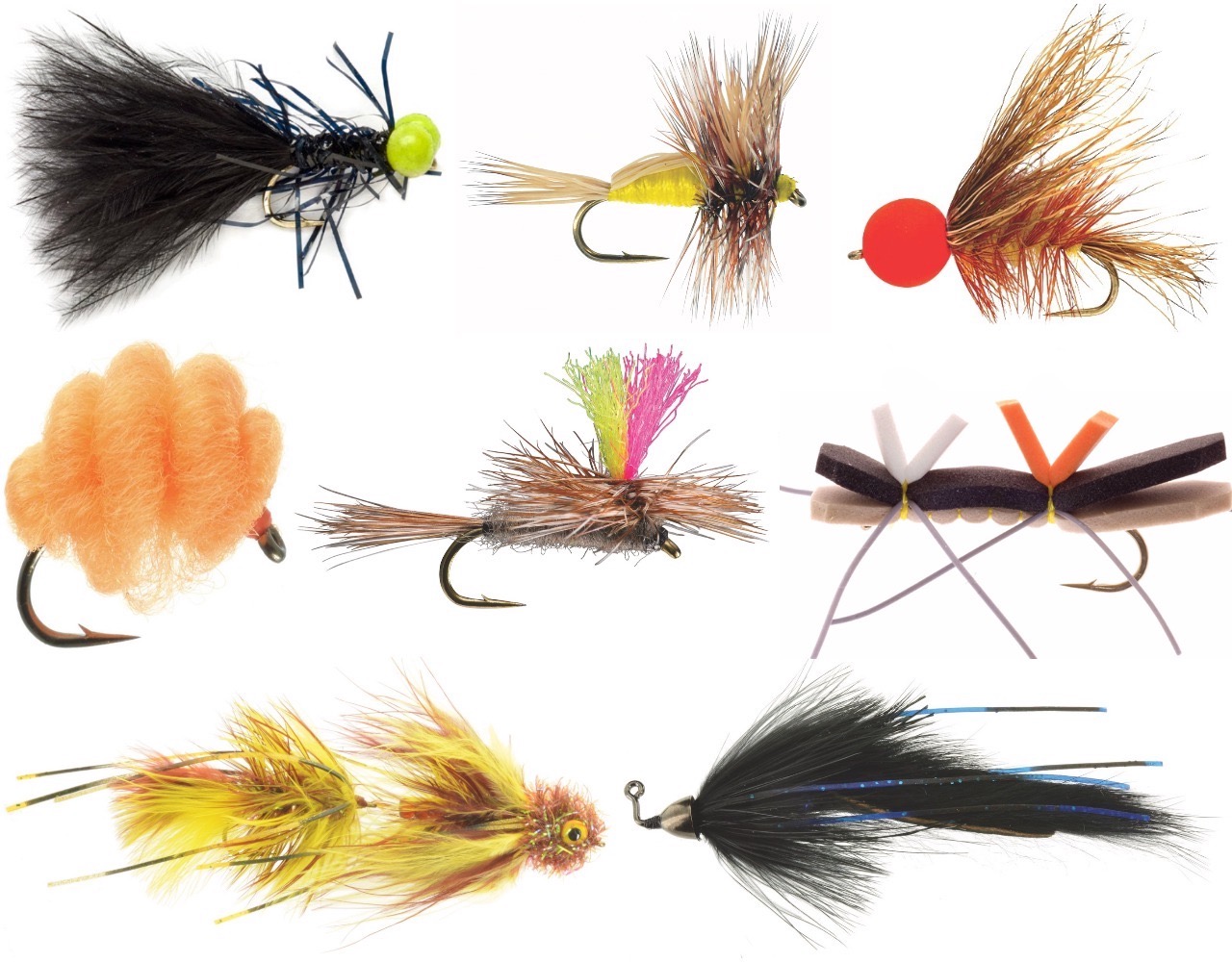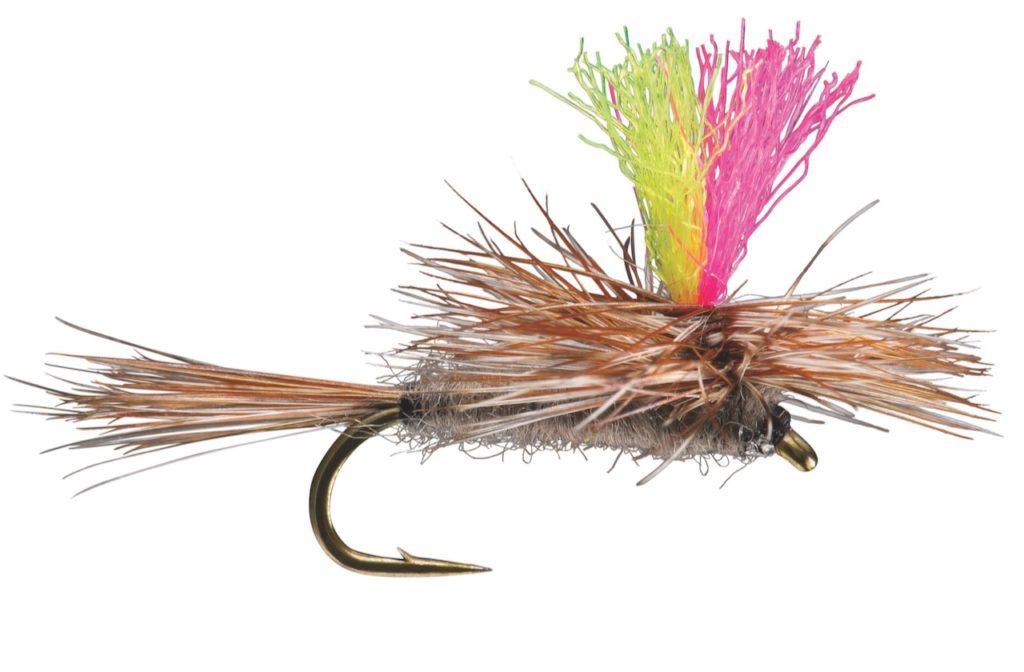THE UGLIES
These flies may not be easy on the eyes, but they sure do a beautiful job of catching fish
Advertisement
HI-VIS PARACHUTE
Conventional dry flies float thanks to a hackle feather wound around the hook shank. Parachute-style dries, on the other hand, have the hackle wound horizontally around a stout “wing post” of poly yarn, making for some cool effects. For starters, the horizontal hackle keeps the fly on top in current, yet lets it lands delicately on smooth water. Perhaps more importantly, the fly sits in the surface film rather than on it, just like an emerging mayfly does at the most vulnerable point of its lifecycle.
Advertisement
Parachute flies were slow to catch on, but the Adams—long North America’s most popular dry fly—has now been supplanted by the Parachute Adams. However, these wee little parachute flies have a problem: the typical white wing post is surprisingly hard to see amid the foam and bubbles on a river’s surface. Not so with the Hi-Vis Parachute’s hot pink or chartreuse wing post, which you’ll never lose sight of, even at dusk. The fish on the other hand, won’t be alarmed by the gaudy wing since it’s obscured by the horizontal hackle. The fly pictured here is tied in classic Adams colours, but you can apply the Hi-Vis principle to any beloved pattern, depending on your tolerance for clown colours.
- HOOK: Dry fly, sizes 12 to 18
- TAIL: Hackle fibres
- BODY: Sparse dubbing
- WING: Chartreuse and/or hot pink poly yarn, tied upright
- HACKLE: Parachute style


